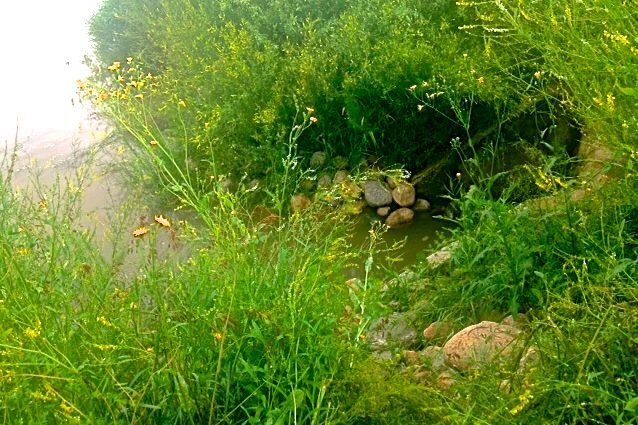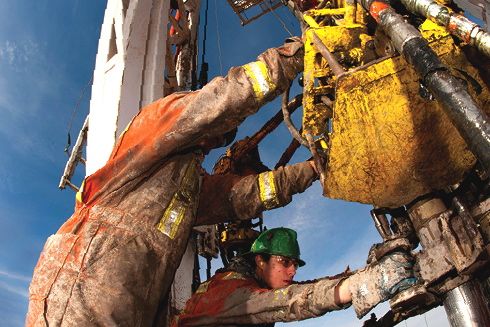As the cleanup of the Husky Energy oil spill continues on the North Saskatchewan River, officials had a spot of good news during a recent media call.
Collected water samples haven’t exceeded Canadian drinking water standards since July 24.
As of Tuesday, over 1,000 water samples had been collected from over 60 locations between the spill site and Prince Albert, Sask., said Dr. Paul Noni.
Noni is a senior toxicologist with the Centre of Toxicology and Human Health, based in Arkansas. He’s also part of a technical advisory group assessing the spill’s effect on the North Saskatchewan.
Read Also

U.S. livestock: Cattle strength continues
Cattle futures on the Chicago Mercantile Exchange were stronger on Friday, hitting fresh highs to end the week.
Five locations along the river did initially exceed drinking water standards after Husky’s July 20 pipeline break and spill near Maidstone, about 85 km northwest of North Battleford.
Those water quality breaches were “transient,” rising above standards one day, and receding later, Noni said. He noted they are still finding compounds from the spill, but at low concentrations.
Health Canada’s drinking water guidelines are “very health-conservative,” he said, representing water that is safe for people to drink for a lifetime.
When samples exceed those guidelines, it’s a red flag warranting further investigation, he said, and consistent high levels, time after time, indicate a potentially significant issue.
Water samples haven’t exceeded guidelines for agricultural use, Noni said. Those guidelines include drinking water for livestock and irrigation.
However, the cities of Prince Albert and North Battleford aren’t yet opening their water intakes in the North Saskatchewan, instead relying on alternative water sources.
Muskoday First Nation and the RMs of Prince Albert, Buckland and Cana have also had water supply problems because of the spill. But water supply operations in those communities “have reached a pretty stable environment,” said Duane McKay, commissioner of emergency measures and fire safety.
Prince Albert supplied rural water authorities with water before the spill. However, “the city wants to maintain their water supply for their citizens as their top priority,” said McKay.
Prince Albert is now drawing water from the South Saskatchewan and Little Red River. McKay said tankers were on contract to supply water to the city’s hospital in case of interruptions. Those tankers have been released and the hospital is sourcing its water from the city.
“That indicates that the city is becoming more comfortable,” he said.
For now, tankers are supplying rural residents with water. McKay said that the city is considering allowing tankers to pull water from their system for rural residents.
The spill also led SaskWater officials to close the water intake at Codette Lake, about 150 km east of Prince Albert. That intake normally supplies communities including Melfort, Kinistino, Star City, Beatty and Weldon, among others, and rural customers in the Melfort and Weldon areas.
Until the river is again declared safe, the Melfort area has switched its supply to a reservoir at its water treatment plant. A drinking water advisory was briefly in effect for the area after the switch.
Scientists are still analyzing the spill’s effect on aquatic wildlife. As of Wednesday, 63 wildlife mortalities were recorded, including birds, fish, and other animals.
Longer term still a question mark
While some materials from an oil spill dissipate rapidly, heavier oil sinks. It tends to bind with organic matter and sediment, and stay close to the spill site, Noni said.
How much heavy oil remains below the surface is still an unknown. Noni said they are gathering data about oil collecting along the shoreline.
“That gives us a good idea of where those heavier oils might be down below the water surface,” Noni said. Sediment samples from those locations are a priority, he said.
What kind of long-term risk those heavy oils present is still a question mark. Noni said one factor is the moving sands in the North Saskatchewan, which heavily affect the river’s floor and shores.
“It is a dynamic river,” he said.
The freeze-thaw cycle is another potential issue. During the spring melt, the river’s ice breaks into large iceberg-like chunks. Those ice chunks could release more materials, Noni said.
Plans for ongoing monitoring still need to be worked out, he added. — AGCanada.com Network














